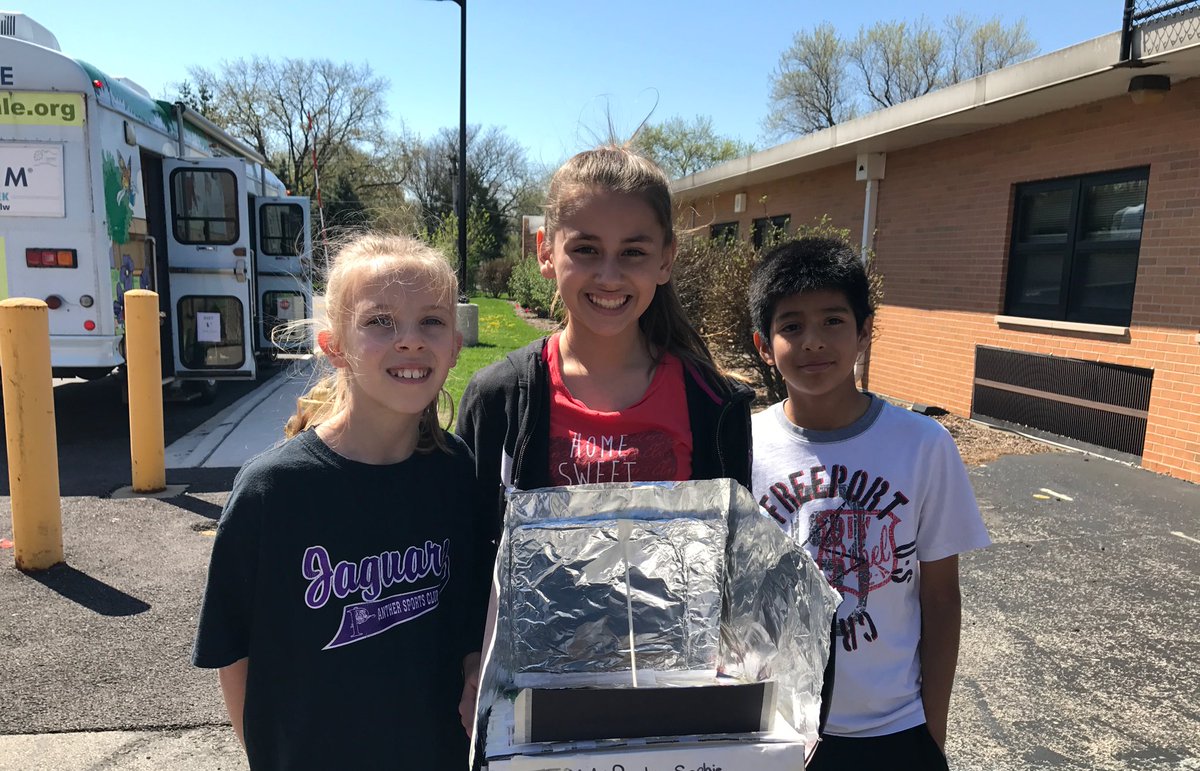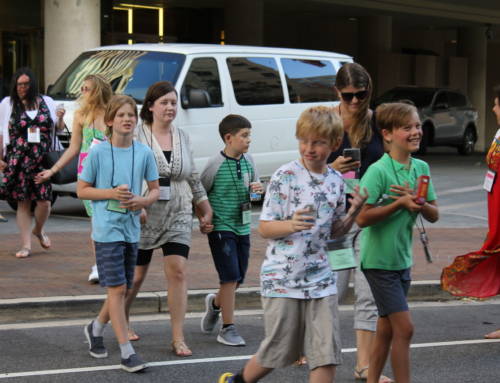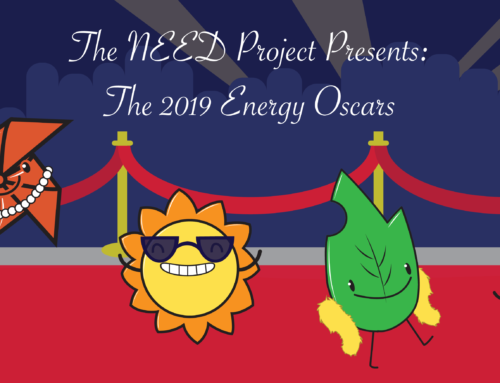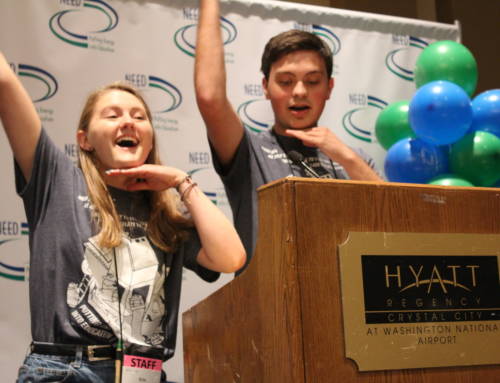Summer is approaching and soon people will be gassing up the grill for cookouts!
Learn more about what fuels your barbecue and try our solar oven activity utilizing the sun’s rays.
Propane
Propane is the gas we use to fuel our backyard grills. It is a lot like natural gas—you cannot see it, smell it, or taste it, but you can burn it to produce heat energy. Propane has been around for millions of years. It is buried underground in sedimentary rocks with natural gas and petroleum. It is a fossil fuel, formed hundreds of millions of years ago, long before the dinosaurs. Like oil and natural gas, it was formed from tiny sea animals and plants. Propane is a nonrenewable energy source.
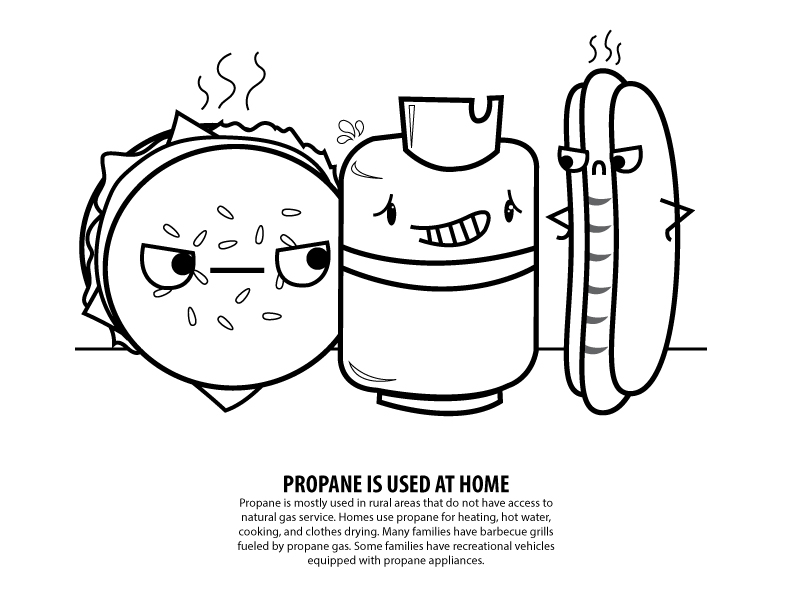
When propane comes out of the ground, it is a gas. But when it is put under pressure, it becomes a liquid. A lot more liquid can be put into a tank than gas. A tank of propane gas might last a week. The same sized tank of liquid propane could last five years!
Liquid propane is portable—that means it is easy to move from place to place. We use small tanks of liquid propane for our barbecue grills.
Some cars and buses use propane for fuel. It is a very clean fuel. It doesn’t pollute the air like gasoline.
Solar
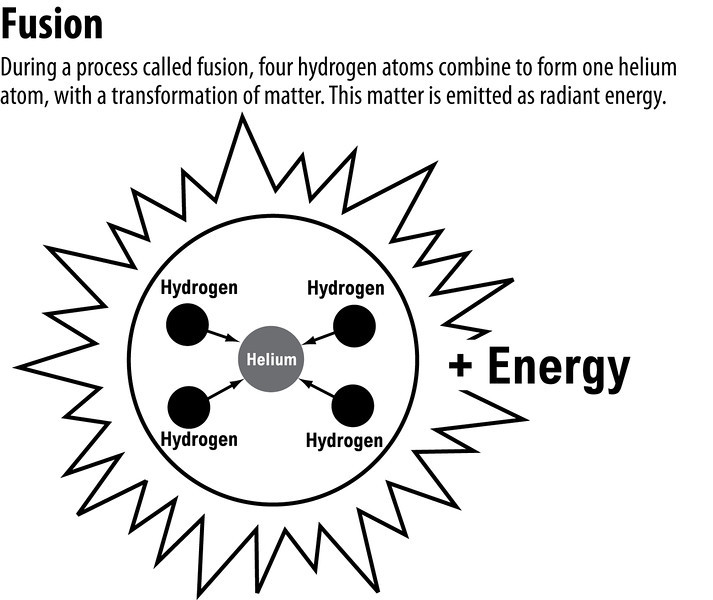 Every day, the sun radiates (sends out) an enormous amount of energy. It radiates more energy each day than the world uses in one year. Solar energy is a renewable energy source.
Every day, the sun radiates (sends out) an enormous amount of energy. It radiates more energy each day than the world uses in one year. Solar energy is a renewable energy source.
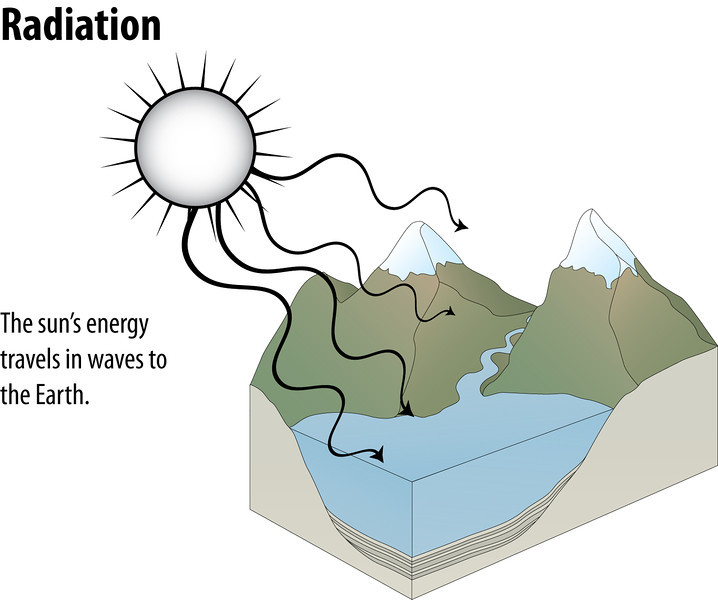 In addition to supplying a large amount of energy directly, the sun is also the source for many different forms of energy. Solar energy powers the water cycle, allowing us to harness the energy of moving water (such as dams). Solar energy drives wind formation, allowing us to use wind turbines to transform kinetic energy into electricity. Plants use solar energy in the process of photosynthesis. Biomass can trace its energy source back to the sun. Even
In addition to supplying a large amount of energy directly, the sun is also the source for many different forms of energy. Solar energy powers the water cycle, allowing us to harness the energy of moving water (such as dams). Solar energy drives wind formation, allowing us to use wind turbines to transform kinetic energy into electricity. Plants use solar energy in the process of photosynthesis. Biomass can trace its energy source back to the sun. Even 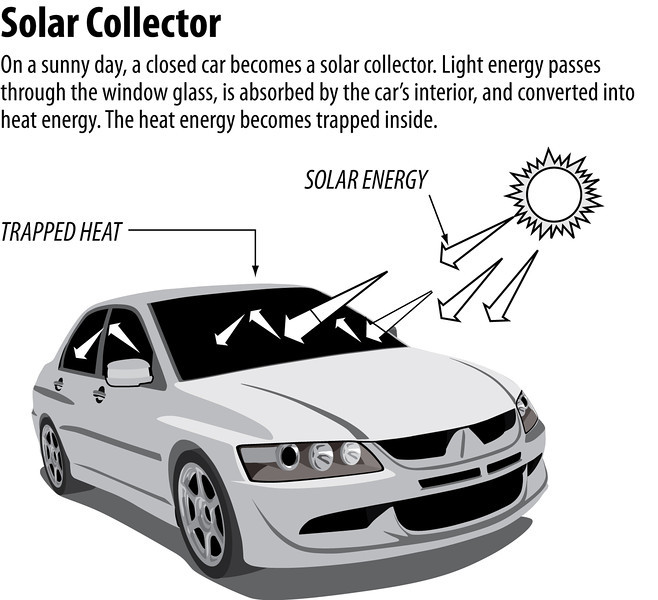 fossil fuels coal, oil, and natural gas originally received their energy from the sun. We use that energy to cook our food, warm our houses, run our cars, and make electricity.
fossil fuels coal, oil, and natural gas originally received their energy from the sun. We use that energy to cook our food, warm our houses, run our cars, and make electricity.
Heating with solar energy is not as easy as you might think. Capturing sunlight and putting it to work is difficult because the solar energy that reaches the Earth is spread out over a large area. A solar collector is one way to capture sunlight and transform it into heat energy, or thermal energy. The amount of solar energy an area receives depends on the time of day, the season of the year, the cloudiness of the sky, and how far one is from the Earth’s Equator. A closed car on a sunny day is a solar collector. As sunlight passes through the car’s windows, the seat covers, side panels, and floor of the car absorb it. The absorbed energy transforms into thermal energy that is trapped inside the car.
Solar Oven
Design and test your own solar oven in a fun and yummy way to learn about the transformation of radiant energy to thermal energy. Investigate how reflected light can be concentrated on an object to perform a task like cooking.
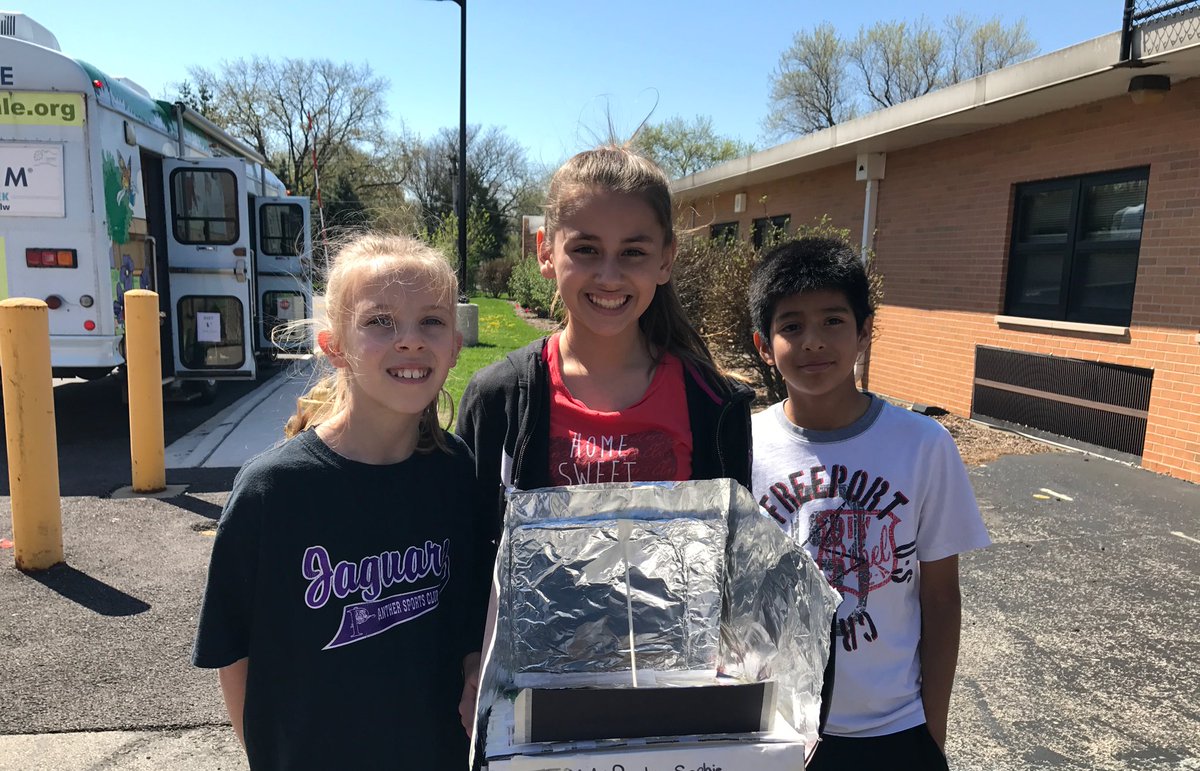
Materials
– Small pizza box
– Oven thermometer
– Food to cook (S’mores, hotdog, English muffin pizzas, nachos & cheese, etc.)
– Paper plate or pan to cook on (dark plates/pans may work more efficiently for cooking)
– Plastic wrap
– Aluminum foil
– Wooden skewers
– Scissors
– Rulers
– Marker
– Black construction paper
– Oven thermometer
– Sunny day
General Directions to Build a Solar Oven
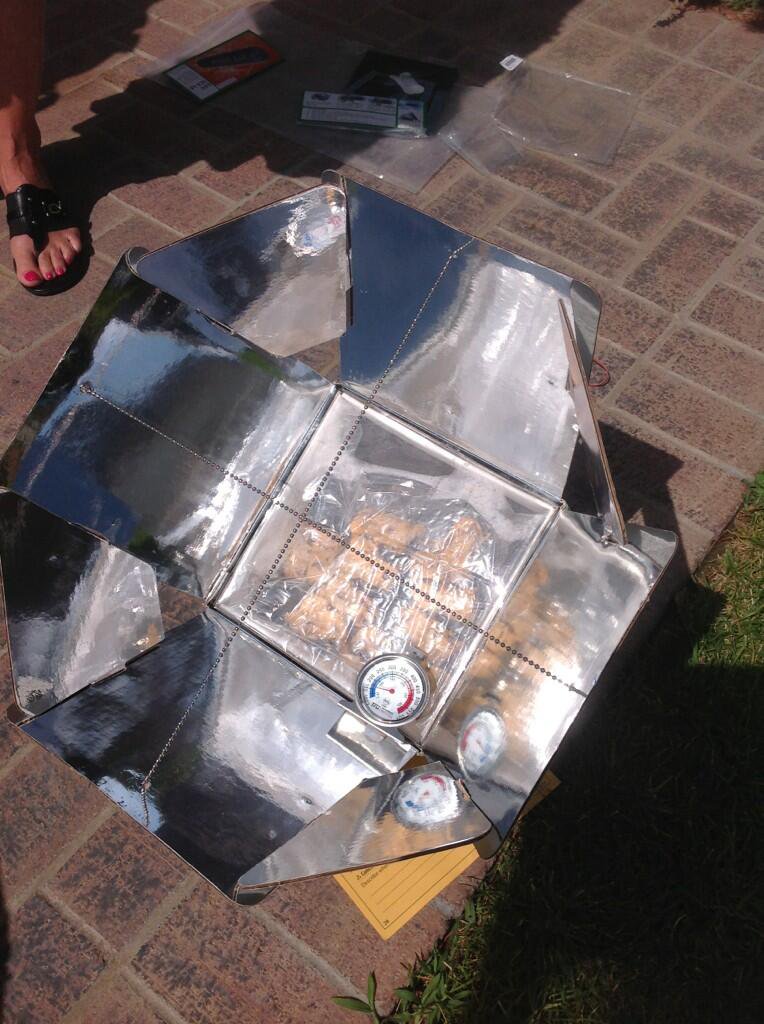 On the top of the pizza box, use your marker to draw a square with edges spaced 1” from all sides of the box.
On the top of the pizza box, use your marker to draw a square with edges spaced 1” from all sides of the box.- Use scissors to cut along the sides and front edge of the lid, leaving the fourth side along the box’s hinge uncut.
- Tape aluminum foil to the inside surface of the new flap you just cut, shiny side visible. This is to reflect sunlight into the box. Smooth out any wrinkles that might occur.
- Tape plastic wrap to the original box flap so that it covers the hole you cut into the flap. Seal all four of the edges with tape.
- Tape black construction paper to the bottom inside of the box. This will help absorb the incoming sunlight.
- Cover any air leaks around the box edges with tape, making sure that the box can still be opened to place food inside or remove it later.
- Go outside in the sunlight and place the solar oven on a level flat surface.
- Place food items on a paper plate and place it inside the oven. Put the oven thermometer inside the oven where you will be able to see it without moving the oven.
- Tape one end of a wooden skewer to the reflector lid, attach the other end to the box to adjust reflector.
- Let the food cook and periodically check the reflector angle to make sure sunlight is getting inside the oven.
For more information on all the energy sources and hands-on corresponding activities, check out NEED’s Curriculum Resources. All FREE to download and organized by topic, subject, and grade level!
